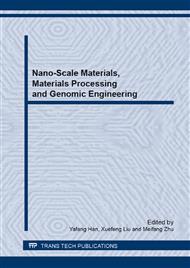p.518
p.522
p.530
p.536
p.543
p.549
p.554
p.560
p.566
Helium Diffusion in Tungsten Studied by Molecular Dynamics Method
Abstract:
The interstitial helium (He) atom diffusion in tungsten (W) was studied by the Molecular Dynamics Simulation with the drag method, the Nudged Elastic Band method (NEB) and the mean square displacement (MSD) method. The diffusion barriers and the possible microscopic diffusion path were calculated by the drag method. It has the characteristics of simple, intuitive, and occupies less computer resources, but can't get the diffusion equation. The NEB method is more reasonable than the drag method to calculate the diffusion barriers, and determine the diffusion path which, but the former spends more computer resources than the latter, and it also can't get the diffusion equation. The diffusion equation is obtained by MSD method, including the diffusion per-factor and diffusion barriers. It is suggested that the mechanism of He diffusion changes with difference temperature, which spends the most computer resources among the three methods.
Info:
Periodical:
Pages:
543-548
Citation:
Online since:
April 2014
Authors:
Keywords:
Price:
Сopyright:
© 2014 Trans Tech Publications Ltd. All Rights Reserved
Share:
Citation:


